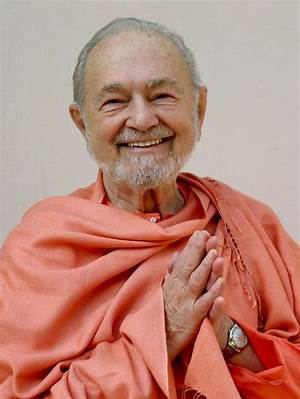
[ad_1]
Let me be Christian, Jew, Hindu, Buddhist, Mohammedan, or Sufi: I care not what be my faith, race, creed, or shade, if solely I can win my solution to Thee! However let me be none of those if that id enmeshes me in an enclosing web of spiritual or social formalities. Let me journey the royal excessive highway of realization which results in Thee. If I’m touring on some bypath of faith, lead me onto the one widespread freeway of realization which leads straight to Thee.
Ship me the sunshine of Thy knowledge, that it lead me to the morning of my rising powers; and ship me the moon of Thy mercy to information me rightly, if ever I’m misplaced in the dead of night night time of sorrow.
– Paramhansa Yogananda
The Teachings of Pantajali
Sutra One: Now begins the topic of Yoga.
Thus begins the one e-book on yoga that’s universally acknowledged as a scripture. It was written by an ideal grasp of spirituality who lived 1000’s of years in the past. Nearly nothing is thought about him. He’s believed to have been married, and he lived, clearly, in India. The remainder is, so far as I do know, obscure. The significantly troublesome side of his instructing, nevertheless, for us dwelling right this moment, is that his explanations had been so condensed as to be virtually incomprehensible!
Today, we like phrases and use them expansively. Adjectives and adverbs are the very entre and dessert of present-day writing. If a author can inform us {that a} sure scene included a sundown, he received’t miss the prospect. If he can describe that sundown as “glowing, multi-hued, radiant,” and so forth., and inform us that he himself was “reworked, tranquil, peaceable, and suffused with happiness” whereas watching it, he’ll virtually definitely accomplish that.
The non secular instructor in India 1000’s of years in the past would have thought of the sundown itself fairly irrelevant, associated because it was to mere sensory data, and simply one other side, subsequently, of the delusion he needed his college students to transcend.
Patanjali, for most individuals our instances, reads reasonably like a purchasing record! And but his is the one yoga scripture on which everybody seems to be as authoritative. For the trendy reader, his succinctness may be exasperating!
Fortuitously, Paramhansa Yogananda, a contemporary grasp, had the identical profound perception as Patanjali. All liberated masters have attained the identical stage of realization, nevertheless a lot their followers could squabble about their relative deserves. Yogananda defined Patanjali’s teachings with easy readability.
There’s a extensively circulated printing of lessons my Guru gave on the topic, however these lessons had been generally complicated, for he typically departed from his topic to handle specific questions within the minds of his viewers. The essence of all he taught, nevertheless, contains Patanjali’s teachings. Furthermore, he spent many hours with me alone within the desert, discussing the finer factors of these teachings.
What I current right here are usually not my very own ideas, however these of my Guru.
“Now comes the topic of Yoga.” That phrase, “now,” accommodates the important which means of this sutra, or verse. It implies that, to be able to find out about yoga, one should first be schooled within the ideas of Shankya. One should, in different phrases, pay attention to the necessity for understanding the common significance of the consciousness which yoga follow will present.
The teachings of shankhya are equally historic. In them, the true nature of human life is defined: not the day-by-day life all of us stay, with the necessity for breakfast, lunch, and dinner; the necessity to work to be able to help oneself; the urge most individuals really feel for marriage, for intercourse, for the satisfaction of manufacturing and having youngsters; the necessity for pleasure which most individuals discover in possessions, in others’ esteem, in sensory indulgence, and in self-reassurance.
What the shankhya instructing factors out is that no success can ever be lengthy lasting. Too many fulfillments, furthermore, require a dedication of vitality that binds one to an ever-turning wheel. Each success is adopted by disappointment; each success, by failure; each triumph, by some type of catastrophe. It is sort of a youngsters’s playground swing: each motion ahead have to be adopted by an equal swing backward.
The farther the swing strikes ahead, furthermore, the farther it should swing again in the other way. The higher the outer success, the higher additionally the outer disappointment. One’s happiest moments are balanced by essentially the most depressing. If one is fortunate—that’s to say, if one’s karma is nice—his happiest moments will consequence all the earlier in his most depressing.
The very afternoon of the day on which he obtained his long-awaited promotion, for instance, he’ll study that he has most cancers. Often, nevertheless, his karma will probably be inter-mixed, and complicated. His most cancers will probably be found years later and will probably be attributed to some fully unrelated trigger.
Folks go bumping on by means of life, by no means understanding why something occurs to them, priding themselves for the unsuitable causes.
Thus, folks go bumping on by means of life, by no means understanding why something occurs to them, priding themselves for the unsuitable causes, and blaming others for each misfortune or second of unhappiness when each misfortune was actually introduced on by themselves.
The character of unhappiness is that it makes one suppose his distress won’t ever finish. It does finish, in fact, and since there’s at all times gentle on the finish of the tunnel, folks at all times attain out for it in hope—the one in poor health preserved by Pandora when she closed her field.
“Get away,” Krishna cries within the Bhagavad Gita, “from My ocean of struggling and distress!”
Strange human beings are spiritually blind. Of their ignorance of the insights of knowledge, they blame God. To them, God is merciless, detached, offended with folks for embracing error, and coldly callous to their inevitable struggling.
One wonders why folks proceed clinging to the wheel. However the reply is clear: there’s at all times hope! They’ve identified enjoyment and success: maybe they’ll know this stuff once more. And they also do, in fact. They cling to the wheel by alternative. The clinging will not be God’s want for them.
Shankya inform us why we must always get off the wheel. Clinging can get us nowhere. It couldn’t probably accomplish that.
The deeper “why” of it, nevertheless, will not be defined. A saying of shankya is, “Ishwar ashiddha, God will not be proved”—the purpose not being that God doesn’t exist, however reasonably that data of the world by means of the senses can not show His existence. Shankya is directed towards proving that sensory data is insufficient for any true understanding. (The labors of science are subsequently, in essence, futile!)
Elsewhere within the Indian teachings, it’s made clear that what we name God is, in truth, Infinite Consciousness. That Consciousness, the Supreme Spirit, is with out substance, and with out motion of any variety. Its nature is Satchidananda: ever-existing, ever-conscious, ever-new Bliss. The “ever-newness” of that state evokes it now and again to manifest a part of Itself as Cosmic Creation. This it does by setting Itself superficially—on the floor, so to talk, of the Infinite Ocean of Consciousness—in movement.
The Christian New Testomony, the Gospel of St. John, begins with the sentence, “At first was the Phrase, and the Phrase was with God, and the Phrase was God.” The which means of this sentence is not any totally different from what I’ve already written. The phrase of a person is the vibration of his consciousness. And the Phrase of God is the Divine Consciousness, vibrating. Fact, whether or not East or West, can not however be the identical. The Cosmic Vibration, AUM, is what the Bible calls the Holy Ghost.
 In Christian custom we study of the Trinity: Father, Son, and Holy Ghost; three in a single and one in three. The thriller appears unimaginable of answer. However it’s defined fairly merely within the Hindu custom—as merely as something cosmic may be defined in human phrases!
In Christian custom we study of the Trinity: Father, Son, and Holy Ghost; three in a single and one in three. The thriller appears unimaginable of answer. However it’s defined fairly merely within the Hindu custom—as merely as something cosmic may be defined in human phrases!
God the Father is the Supreme Spirit: Sat. God the Holy Ghost is AUM. The Son will not be Jesus Christ, however the Christ Consciousness, Sat, or the Kutastha Chaitanya: the unmoving consciousness of Spirit mirrored (so to talk) in each level of Creation. For there can’t be two infinite realities.
The vibration essential to provide Creation can not then exist as a separate actuality from that of the ever-motionless Spirit. In that vibration itself there must exist additionally motionlessness. And so it does. For on the central level, between every oppositional motion, there must be a degree of relaxation the place these opposites stop to exist. That time of relaxation is the “reflection” of the state of stillness past Creation: of the Supreme Spirit itself. This nonetheless reflection is the Christ Consciousness—Tat, within the Sanskrit terminology. Thus, we have now the three in a single and one in three!
Jesus, the person, was not the “son of God.” However in meditative consciousness, he had that oneness with the Christ consciousness. He himself (be it famous) used each expressions: son of man, and Son of God. It was in that increased state that he might say rightly, “I and my Father are one.”
By his instance, and likewise by the instance of all who, by excellent interior stillness and purity, have attained that prime state of consciousness, we could all bear in mind that we’re, all of us, merchandise of God’s consciousness. All of the speak within the church buildings about our being the kids of Adam and Eve and born in sin is itself a sin! Sin means solely error: it means to suppose we will discover success in acts and attitudes that can hold us sure to what’s in truth however a delusion: this worldly existence. It’s all a dream. It has no actual kind, substance, or actuality of any variety, besides as God’s dream! Our best sins are solely errors, dedicated in misunderstanding. We could sin, however we ourselves are usually not sinners. No sin can outline our actuality. A saint, Yogananda used to say, is a sinner who by no means gave up!

[ad_2]